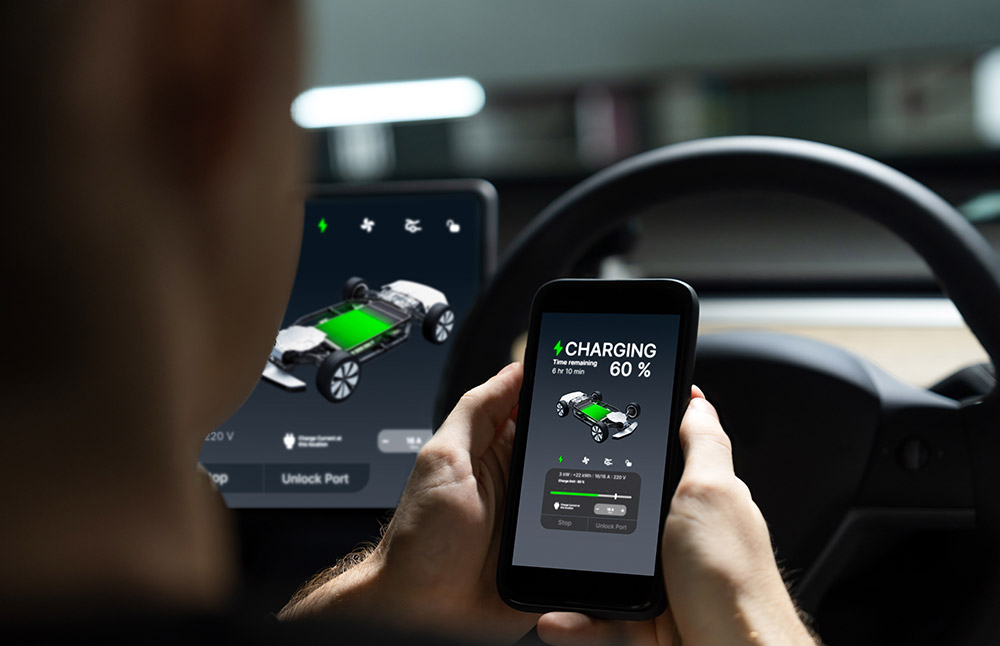Battery Producers Answer Earth Day’s Call for Renewable Energy Sources

People and power have always been at the heart of Earth Day, especially when it comes to being a catalyst for a paradigm shift. When people unite with a common purpose, they can overcome even the most entrenched resistance to change of systems and industries.
Our Power, Our Planet is this year’s Earth Day call to action. The focus—transitioning to renewable energy sources and tripling the global generation of clean electricity by 2030. An industry that’s currently living and breathing Earth Day’s theme of transitioning to renewable energy sources and tripling the global generation of clean electricity is—the battery industry and its end-use sectors.
Battery producers are working on high-level business and sustainable initiatives from electric vehicle (EV) battery demand, reducing carbon emissions, and improving grid stability, to developing reusable and recyclable strategies, as well as reducing reliance on critical material resources, and much more. It’s no coincidence these initiatives currently underway align perfectly with the Earth Day 2025 theme.
Here are some business scenarios where battery producers are innovating battery chemistry, zero operational emissions, and using product lifecycle management (PLM) to manage the entire lifecycle of their products.
IN SYNC WITH EARTH DAY’S TRANSITION TO RENEWABLE ENERGY SOURCES
Emerging Sustainable Battery Innovations
When it comes to finding alternative chemistries, sustainable solutions, or reducing reliance on mineral resources to develop innovative power sources, battery producers have a few answers. Researchers are still testing sodium-ion batteries, a potential alternative to lithium-ion batteries. These batteries offer several benefits such as cost advantages, enhanced safety for EVs, and flattening the demand for grid storage. Because the batteries use ubiquitous and sustainable materials, the reliance on costly rare materials like lithium and cobalt is reduced.
Another battery technology in the works is solid-state batteries (SSBs). What makes these batteries unique is they use solid electrolytes instead of liquid or gel electrolytes found in traditional lithium-ion batteries. Solid state technology offers several advantages for sustainability and reducing the use of mineral resources. With a smaller carbon footprint, longer lifespan, and faster charging times, SSBs offer a better option for sustainable energy storage.
While not yet widespread, lithium-sulfur (Li-S) batteries use the cathode material of sulfur which is abundant and lower in cost than cobalt. This helps to minimize battery production costs and avoid ethical and environmental concerns surrounding cobalt mining. Companies are currently commercializing Li-S for use in transportation, aerospace, space, consumer electronics, and energy storage markets.
Some manufacturers, particularly in North America, are starting to use cobalt-free lithium-ion batteries to meet the increasing demand for EVs. These batteries are designed to eliminate or significantly reduce the use of cobalt and provide safety, long life, and high-temperature stability, making them ideal for various applications such as transportation, solar-powered lighting systems, and energy storage.
Storing Renewable Energy
A battery energy storage system (BESS) is a type of energy storage technology that uses batteries to store electrical energy when power is needed. Lithium-ion batteries used in mobile phones and EVs are typically the dominant storage technology used for large scale plants to help electricity grids ensure a reliable supply of renewable energy. Battery energy storage systems are considerably more advanced than the typical batteries used in households or in children’s toys. Storage systems can also be charged by electricity generated from renewable energy, like wind and solar power.
While battery energy storage systems are currently the most economically viable energy storage solutions available, there are several other technologies for battery storage currently being developed that are more sustainable and operate cleaner. These include:
- Compressed Air Energy Storage (CAES): A technology that stores excess electricity by compressing air and storing it in underground caverns or tanks which can be released to generate electricity during peak demand periods or when needed. As an eco-friendly energy storage solution, CAES helps balance electricity supply and demand, especially with wind and solar. It produces zero emissions during operation and can store energy for long periods of time.
- Mechanical Gravity Energy Storage: A form of energy storage that uses the Earth’s gravity to store energy. The energy is stored in the form of potential energy, which is the energy that an object possesses due to its position relative to other objects. This technology helps sustainability with minimal environmental impact, produces zero emissions during operation, and can be easily scaled up or down to meet varying energy demands. Gravity energy storage systems have the potential for long-term operation with minimal degradation, leading to lower maintenance costs and extended lifespan.
- Flow Batteries: A type of rechargeable battery where chemical energy is provided by two chemical components dissolved in liquids. The liquids are contained within the system and separated by a membrane. Flow batteries offer several benefits such as longer lasting charge time, ideal for large-scale energy storage, low operating costs, and scalability—energy can be easily scaled up or down by changing the size of the external electrolyte reservoirs.
Reducing the Lithium Dependency and Increasing Battery Deployment
To lead the industry, battery producers must continue to find alternative and sustainable resources to reduce their dependence on lithium. Adopting the latest technologies not only helps to drive the industry forward but also facilitates innovative solutions. Companies that fail to adopt risk falling behind. By investing in advanced manufacturing processes and smart technology solutions like PLM, battery producers can enhance their product offerings to be more sustainable and meet the growing demands of consumers.

PLM SOLUTIONS ARE PLAYING A CRITICAL ROLE IN SUPPORTING SUSTAINABILITY AND IMPROVING BATTERY PRODUCT DEVELOPMENT
Here are three business cases where battery producers are using PLM to drive sustainable and faster product development:
instagrid
Moving From Prototype to Production, Faster
Instagrid, Europe’s leading provider of high-performance portable systems, offers a sustainable alternative to high-pollution fossil fuel generators used to power mobile work in construction, film, events, and emergency services. By aggregating all the mechanical, electrical, and software components into a single system, Arena’s cloud-native PLM solution enables instagrid’s multidisciplinary engineering team to collaborate more effectively to ensure both interoperability and design for manufacturability (DFM) as well as gain greater control and traceability throughout the entire lifecycle.
Enphase Energy
Commitment to Innovation, Quality, and Sustainability
Enphase Energy makes solar simple and energy smart with commercial and residential solar and battery systems. Enphase uses Arena PLM to manage product development and quality processes both internally and across its complex supply chain. In addition, Arena Analytics enables the company to perform regular process tracking to understand where change or quality bottlenecks occur and take steps to resolve them. With Arena, Enphase can easily refine processes and strive for the best in product, quality, and business.
H2 PowerTech
Adopting Green Initiatives and Encouraging Alternative Energy Solutions
H2 PowerTech fuel cell products are a direct replacement for traditional power generators and provide customers with economic and environmental benefits. By helping to commercialize fuel cell systems as an alternative and sustainable energy option, H2 PowerTech enables telecom companies to lower their greenhouse gas emissions and carbon footprint across the globe. Arena’s cloud-native PLM has enabled the company to implement scalable and cost-effective processes among global teams in Tawain, South Africa, and R&D in Oregon. Having all product information in a single, secure, and scalable system is key to H2’s success and ability to deliver products to market fast and without issues.
A Scalable Solution to Drive Market Demand
Arena cloud-native PLM is helping battery producers deliver highly sophisticated products ahead of the competition. Cloud-native product development solutions like Arena provide battery producers with a modern framework to improve collaboration, drive innovation, and speed time to market.
Arena PLM is helping companies improve clean energy and product innovation and put sustainable practices into action such as designing for sustainability, supply chain optimization, circular economy models, and tracking and reporting sustainability information.
Rallying the Call for a Renewable Energy
For 55 years, Earth Day has been mobilizing over one billion people annually to act and make a positive change to our planet Earth. This year’s theme of transitioning to renewable energy resonates deeply with battery producers. They face a myriad of challenges, from meeting the growing demand for EVs and responding to international pressures, to scaling manufacturing and innovating greener power solutions. The message from Earth Day is clear: by 2030, our global energy needs can be met by renewable sources, 365 days a year. Let’s start now and lead the charge toward a sustainable future!
Learn more about how Arena can recharge your battery technology development and reduce your product’s environmental impact.
